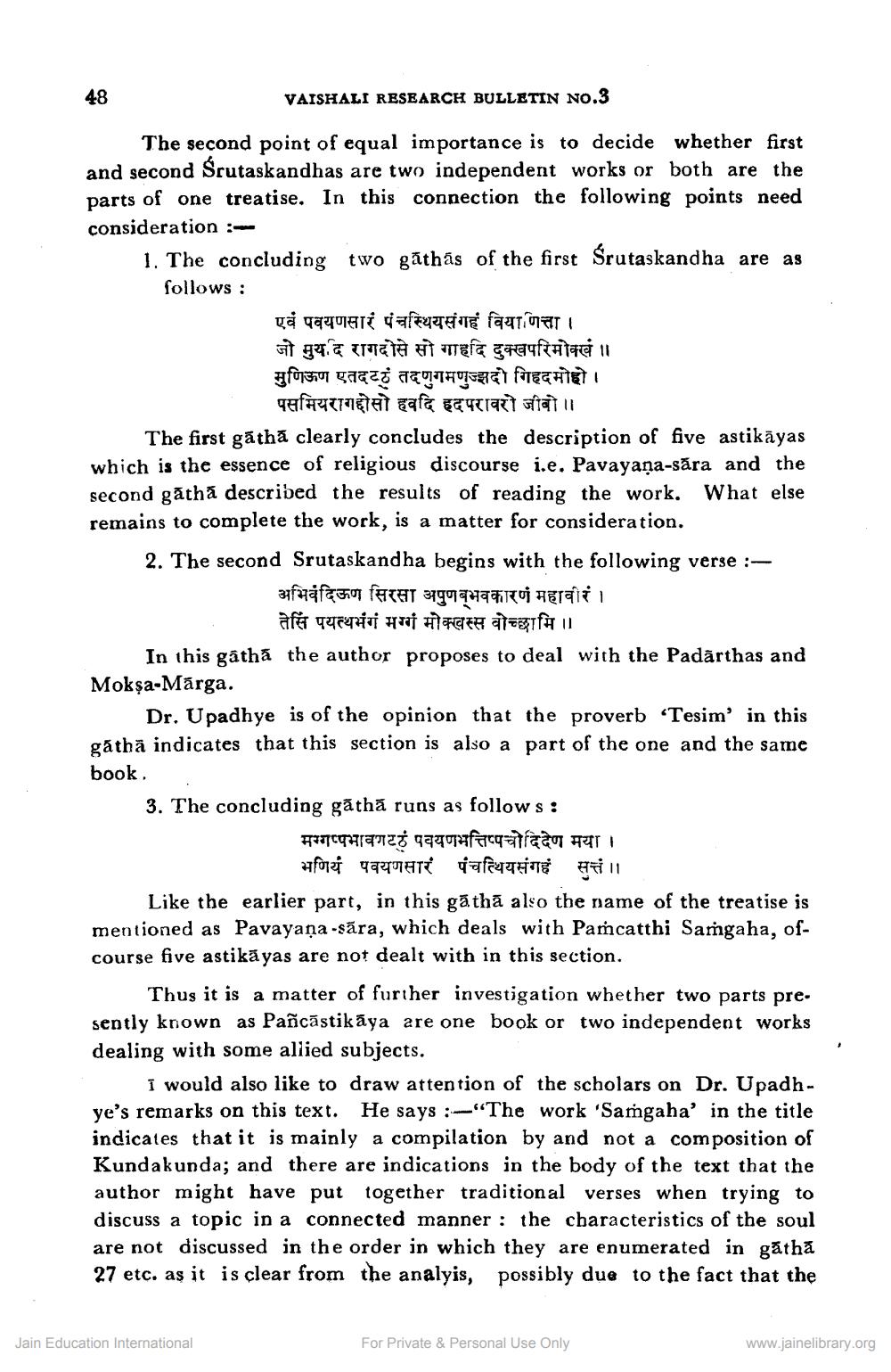________________
VAISHALI RESEARCH BULLETIN NO.3
The second point of equal importance is to decide whether first and second Srutaskandhas are two independent works or both are the parts of one treatise. In this connection the following points need consideration :
1. The concluding two gāthās of the first Śrutaskandha are as follows:
एवं पवयणसारं पंचस्थियसंगहं वियाणित्ता । जो मयदि रागदोसे सो गाहदि दक्खपरिमोक्खं ।। मुणिऊण एतदळं तदणुगमणुज्झदो गिहदमोहो ।
पसमियरागहोसो हवदि हदपरावरो जीबो॥ The first gātha clearly concludes the description of five astikāyas which is the essence of religious discourse i.e. Pavayaņa-săra and the second gătha described the results of reading the work. What else remains to complete the work, is a matter for consideration. 2. The second Srutaskandha begins with the following verse :
अभिवंदिऊण सिरसा अपुणब्भवकारणं महावीरं ।
तेसिं पयत्थभंगं मग्गं मोक्खस्स वोच्छामि ।। In this gathā the author proposes to deal with the Padārthas and Mokşa-Márga.
Dr. Upadhye is of the opinion that the proverb Tesim' in this gathā indicates that this section is also a part of the one and the same book. 3. The concluding gãthā runs as follows:
मग्गप्पभावगटठं पवयणभत्तिप्पचोदिदेण मया।
भणियं पवयणसारं पंचत्थियसंगहं सत्तं ।। Like the earlier part, in this gá thă also the name of the treatise is mentioned as Pavayaņa-sāra, which deals with Paṁcatthi Samgaha, ofcourse five astikā yas are not dealt with in this section.
Thus it is a matter of further investigation whether two parts presently known as Pañcāstikaya are one book or two independent works dealing with some allied subjects.
I would also like to draw attention of the scholars on Dr. Upadhye's remarks on this text. He says :--"The work 'Samgaha' in the title indicates that it is mainly a compilation by and not a composition of Kundakunda; and there are indications in the body of the text that the author might have put together traditional verses when trying to discuss a topic in a connected manner : the characteristics of the soul are not discussed in the order in which they are enumerated in gatha 27 etc. as it is clear from the analyis, possibly due to the fact that the
Jain Education International
For Private & Personal Use Only
www.jainelibrary.org




